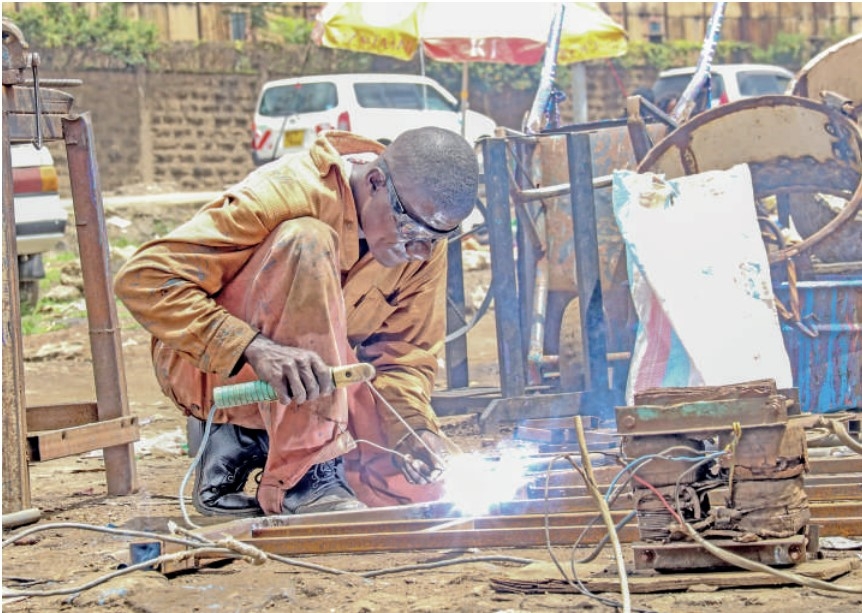Tea farmers in Kenya are set for a higher final payment on bonuses this year which comes as a relief in the wake of rising cost of living.
Most of them are small scale farmers affiliated to the Kenya Tea Development Agency.
Inflation, a measure of the cost of living, rose to a five-year high in June (7.9%), compared to 6.3 per cent in June 2021 with the prices of farm inputs, transport and food skyrocketing.
The tight school calendar has also kept parents on their toes with school fees being a major spending.
Kenya Tea Development Agency (KTDA) this week moves to pay a final bonus of Sh37.11 billion.
This is in addition to the monthly payments totaling Sh25.78 billion, taking the total payout for the financial year 2021/22 to Sh62.89 billion, the highest ever paid to farmers in a year.
It is an increase of Sh18.7 billion or 42.4 per cent from Sh44.15 billion paid last year.
Payment was Sh51.94 billion in 2020, Sh46.45 billion in 2019 and Sh62.36 in 2018.
This year’s high earnings comes with increased average payment per kilo of green leaf which averaged Sh50.18 compared to Sh34.71 last year.
Farmers in Kiambu, Muranga, Nyeri, Kirinyaga, Embu and Meru earned more per kilo compared to their peers in Kericho, Bomet, Kisii, Nyamira, Vigiga, Kakamega and Nandi, official data shows.
The highest paid are those from Gitugi in Murang’a, Rukuriri (Kirinyaga/Embu) and Imenti in Meru where farmers will get Sh62 per kilo.
In Western and Nandi, farmers are getting a lower pay of an average Sh40 per kilo.
The weak shilling against the US dollar partly played in pushing up the farmers earnings as exporters usually paid in foreign currency benefited.
The shilling has been loosing since the first half of the year with Central Bank of Kenya quoting it at a mean of 117.89 yesterday. During the same month last year, it averaged 107.93 per dollar.
A kilo of KTDA teas averaged $2.76 (Sh325.54) this year to June, compared to $2.18 (Sh257.13) last year.
The payments are expected to hit farmers’ accounts this week.
Agriculture CS Peter Munya attributed the high earnings to the minimum reserve price introduced by government in July last year, of $2.43, which helped mitigate falling auction prices.
This adds to the favourable exchange rates, improved management of tea factories, reduction in production costs through efficiencies in production and improvement in the quality of tea.
“This year’s bonus is the highest to be paid to tea farmers across the tea growing counties since 2016,” Munya said.
Unlike in previous years where the farmers were paid their final bonus in the month of October, this year, they will receive it in the month of July.
The current financial year which started last Friday however poses a challenge to the industry, mainly on global factors.
For instance, there are no exports to Russia according to the the East African Tea Trade Association (EATTA),which runs the region’s auction in Mombasa.
“As we speak, we are not exporting to Russia,” EATTA managing director Edward Mudibo told the Star on telephone.
Pakistan, Kenya’s leading export market, also signaled a reduction in consumption with its Senior Minister Ahsan Iqbal rallying the population to reduce the quantity of tea they drink to help cut on the import bill.
The South Asian state is struggling with low foreign currency reserves, currently reported to be only enough for less than two months of all imports.
Pakistan is the world's largest importer of tea, with tea imports taking up more than $600 million (Sh70.4 billion) last year.
It accounts for 40 per cent of Kenya's tea exports and a reduction in consumption will affect export volumes.
Pakistan is the biggest buyer at the Mombasa Tea Auction, taking up 38 per cent of the total weekly sales.
It is followed by Egypt (18%), the UK(9%), UAE, Russia and Sudan each five percent, Yemen (3%) while Afghanistan and Poland each take up two per cent share of the exports.
Iran is at the lower end with one per cent with the rest of the world taking up the remaining.
The Economic Survey 2022 indicates exported tea declined from 5.76 million metric tonnes in 2020 to 5.57 million metric tonnes in 2021, on account of reduced tea production.
The commodity accounted for 19.6 per cent of the total domestic exports, valued at Sh130.9 billion, in 2021, the second highest export earner after domestic exports of horticultural products which were valued at Sh165.7 billion.
WATCH: The biggest news in African Business
















